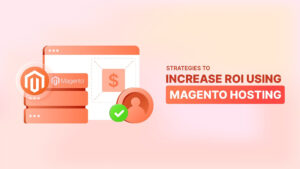From Setup to Success: A Beginner’s Guide to Launching Your First Magento Store in 2025
The dream of starting an online store is more accessible than ever in 2025. With India’s digital economy booming and more consumers embracing online shopping, the opportunities are immense. While platforms like Shopify and Wix offer quick entry points, for businesses serious about long-term growth, deep customization, and robust scalability, Magento (now largely known as Adobe Commerce) stands out as a powerful and professional choice.
Often perceived as complex, Magento can indeed be challenging for first-timers. However, its unparalleled flexibility and feature set make it worth the learning curve for businesses aiming for more than just a basic storefront. This guide aims to demystify the process, walking you through every crucial step from initial planning to successful launch and sustained growth.
If you’re ready to build an e-commerce powerhouse that can adapt to your evolving needs, then let’s embark on the journey of launching your first Magento store.
Phase 1: Pre-Setup Planning – Laying the Groundwork for Success
Before you even touch a line of code or choose a hosting plan, meticulous planning is paramount. This foundational phase will define your strategy and save you countless headaches down the line.
- Define Your Business & Niche:
- What are you selling? Are they physical products (e.g., fashion, electronics), digital goods (e.g., e-books, software), or services?
- Who is your target audience? Understand their demographics, psychographics, needs, and buying habits. For instance, if you’re targeting young professionals in urban India, your design, product assortment, and marketing channels will differ significantly from those targeting rural artisans.
- What makes you unique? (Your Unique Selling Proposition – USP): Why should customers buy from you instead of your competitors? Is it price, quality, niche products, exceptional customer service, or a unique brand story? Your USP will guide all your marketing efforts.
- Develop a Business Plan & Budget:
- Startup Costs: This includes choosing your Magento edition (see below), hosting, theme purchase, essential extensions, branding, initial product photography, and potentially development partner fees.
- Operating Costs: Factor in monthly hosting fees, marketing budget (SEO, ads), maintenance, customer support, and inventory management.
- Monetization Strategy: How will your store generate revenue? (Product sales, subscriptions, commissions?).
- Choose Your Magento Edition:
- Magento Open Source (Community Edition): This is the free, open-source version. It offers incredible flexibility and customization but requires you to handle hosting, security, and all development yourself (or hire experts). It’s ideal for small to medium businesses with a development team or a dedicated development partner willing to invest time in setup and ongoing management.
- Adobe Commerce (Enterprise Edition): This is the paid, enterprise-level solution that includes advanced features, dedicated support from Adobe, enhanced security, B2B functionalities, cloud hosting options (Adobe Commerce Cloud), and superior scalability. It’s best suited for large enterprises with complex e-commerce needs, high traffic volumes, and substantial budgets.
- Consideration: For beginners, Open Source is often the starting point. However, be aware of the technical expertise and resource commitment it demands.
- Secure Your Domain Name & Branding:
- Your domain name is your online identity. Choose something memorable, relevant to your brand, and easy to type. Check its availability across common extensions (.com, .in).
- Secure matching social media handles for consistent branding.
- Develop a clear brand identity – a logo, color palette, typography, and a consistent brand voice. This forms the visual and emotional connection with your customers.
- Understand Legal & Compliance (India Specific):
- Business Registration: Decide on your legal entity (Proprietorship, LLP, Private Limited Company). This is crucial for tax purposes and opening bank accounts.
- GST Registration: If your turnover exceeds certain thresholds (or you plan to sell across state lines), GST registration is mandatory.
- Payment Gateway Regulations: Familiarize yourself with RBI guidelines and KYC requirements for online payments.
- Privacy Policy & Terms & Conditions: These are non-negotiable legal documents. They build trust with customers, inform them about data handling, and protect your business. Seek legal advice to ensure compliance with local laws (e.g., India’s Digital Personal Data Protection Bill, 2023).
Phase 2: Technical Setup – Getting Magento Ready for Business
With your planning complete, it’s time to set up the technical infrastructure.
- Choose Your Hosting Provider:
- This is one of the most critical decisions. Magento is resource-intensive, so standard cheap hosting won’t cut it. Look for:
- Magento-Optimized Hosting: Providers specifically configured for Magento’s requirements (e.g., Nexcess, Cloudways, or major cloud providers like AWS, Google Cloud Platform, Microsoft Azure with proper configuration).
- Performance: Ample RAM, CPU, and SSD storage.
- Scalability: Ability to easily upgrade resources as your traffic grows.
- Security: Robust firewalls, regular backups, DDoS protection.
- Server Location: For an Indian audience, a server in India (e.g., Mumbai data centers) or a nearby region will ensure faster load times for your customers.
- Types: Dedicated servers offer maximum control but are costly; VPS (Virtual Private Server) offers a good balance; Managed Cloud hosting often provides the best balance of performance, scalability, and ease of management for beginners.
- This is one of the most critical decisions. Magento is resource-intensive, so standard cheap hosting won’t cut it. Look for:
- Install Magento:
- For Magento Open Source:
- Download the Magento software package from the official website.
- Upload the files to your hosting server via FTP/SFTP.
- Create a MySQL database and a database user on your server.
- Access your server via SSH and run the Magento installation commands (this requires basic command-line knowledge).
- Alternatively, some hosting providers offer one-click Magento installations, which simplify the process significantly.
- For Adobe Commerce Cloud: This is a fully managed service by Adobe. You primarily focus on customization and development, as Adobe handles the infrastructure and installation.
- For Magento Open Source:
- Configure Basic Settings:
- Once installed, log into your Magento Admin Panel (the backend).
- Store Information: Go to
Stores > Configuration > General > Generalto set your store’s name, email addresses, phone number, and physical address. - Currency & Timezone: Set your base currency to Indian Rupees (INR) and select your local timezone.
- Default Tax Settings: Configure basic tax rules applicable in India.
- Enable SSL (HTTPS): Ensure your website uses HTTPS for secure communication. This is non-negotiable for e-commerce security, builds customer trust, and is a crucial SEO ranking factor. Your hosting provider can help set this up.
Phase 3: Store Customization & Content – Building Your Storefront
Now comes the exciting part: making your store visually appealing and functional.
- Choose & Install a Theme:
- Magento comes with default themes (like Luma or Blank). While functional, they often lack a unique aesthetic.
- Premium Themes: Explore marketplaces like ThemeForest, TemplateMonster, or the Magento Marketplace for professional, pre-designed themes. Look for themes that are responsive (mobile-friendly), fast-loading, and visually align with your brand.
- Custom Theme Development: For truly unique branding and complex requirements, you might consider hiring a Magento developer to build a custom theme, potentially using a Headless Magento approach for unparalleled performance and flexibility (a more advanced topic, but worth noting for future scaling).
- Installation: Themes are typically installed via the Magento Admin Panel or command line.
- Product Management: Your Catalog is Your Core
- Add Products: Magento supports various product types:
- Simple: A single, standalone product (e.g., a specific T-shirt).
- Configurable: A product with options (e.g., T-shirt in different sizes and colors).
- Grouped: A collection of simple products sold together (e.g., a camera kit with lens and bag).
- Bundled: Customizable products where customers choose specific items (e.g., build your own computer).
- Virtual: Non-physical products (e.g., services, warranties).
- Downloadable: Digital products (e.g., e-books, software).
- Product Attributes: Create comprehensive attributes (e.g., Brand, Material, Color, Size, Weight, Manufacturer) to enrich product information and enable filtering.
- Product Categories: Structure your products into logical categories and subcategories for easy navigation (e.g., “Electronics > Smartphones > Android Phones”).
- High-Quality Images & Descriptions: Invest in professional product photography. Write compelling, detailed, and benefit-oriented product descriptions. Good visuals and persuasive copy are crucial for conversion.
- SEO Meta Data: For each product and category, optimize the title tag, meta description, and URL key with relevant keywords to improve search engine visibility.
- Add Products: Magento supports various product types:
- Payment Gateways (India Specific):
- Integrate secure and convenient payment options.
- Popular Indian Gateways: Razorpay, PayU, Paytm, Stripe, CCAvenue, Cashfree are widely used and trusted in India. Research their fees and features.
- Multiple Options: Offer a variety of payment methods (credit/debit cards, UPI, net banking, digital wallets) to cater to diverse customer preferences.
- Cash on Delivery (COD): Still a significant payment method for many online shoppers in India. Ensure your system supports it if relevant to your products and audience.
- Shipping Methods (India Specific):
- Configure how you will deliver products to your customers.
- Types: Flat rate, table rate (based on weight, quantity, destination), free shipping, in-store pickup.
- Integrate with Couriers: Use Magento extensions to integrate with major Indian courier services (e.g., Delhivery, Blue Dart, Xpressbees, Shiprocket) for automated shipping label generation, tracking, and rate calculation.
- Define Shipping Zones: Set up specific rates or options for different regions or states in India.
- Essential Extensions (Modules):
- Magento’s true power comes from its extensibility. The Magento Marketplace offers thousands of extensions. Consider these essentials:
- SEO Extensions: To further optimize your store for search engines.
- Marketing Automation: For email campaigns, push notifications, and loyalty programs.
- Live Chat/Customer Support: To provide real-time assistance.
- Performance Optimization: Tools to further speed up your store.
- Backup & Security: Essential for data protection (especially if using Open Source).
- Analytics Integration: Beyond basic Google Analytics, consider advanced tracking.
- Magento’s true power comes from its extensibility. The Magento Marketplace offers thousands of extensions. Consider these essentials:
- Create Static Content Pages:
- Beyond product pages, create informative and trust-building pages:
- About Us: Tell your brand story.
- Contact Us: Provide clear contact information.
- FAQs: Answer common customer questions.
- Privacy Policy & Terms & Conditions: Crucial legal documents.
- Blog: Integrate a blog (via extension) for content marketing, SEO, and engaging your audience.
- Beyond product pages, create informative and trust-building pages:
- Thorough Testing:
- Before launch, rigorously test everything:
- Add products to cart, proceed to checkout with various payment methods.
- Test shipping calculations.
- User registration and login.
- Admin panel functionalities.
- Test on different browsers (Chrome, Firefox, Edge, Safari) and devices (desktop, tablet, various smartphones) to ensure responsiveness and functionality.
- Test your contact forms and email notifications.
- Before launch, rigorously test everything:
Phase 4: Pre-Launch Marketing & Basic SEO – Building Buzz
A great store needs an audience. Start building buzz before you even open your virtual doors.
- Content Marketing: Start a blog on your Magento store, writing relevant articles that address your audience’s pain points or interests. This builds authority and attracts organic search traffic.
- Social Media Presence: Set up profiles on relevant platforms (Facebook, Instagram, LinkedIn, YouTube, X/Twitter, Pinterest). Start sharing behind-the-scenes content, product sneak peeks, and engage with your future audience.
- Email List Building: Create a “Coming Soon” page with an email signup form. Offer an exclusive pre-launch discount or early access to incentivize sign-ups.
- Basic On-Page SEO: Ensure your product titles, descriptions, and category pages are optimized with relevant keywords identified during your research. Set up an XML sitemap and submit it to Google Search Console. Configure your
robots.txtfile. - Google Analytics 4 (GA4) Setup: Install GA4 on your store to track website traffic, user behavior, conversions, and e-commerce performance from day one. This data will be vital for future optimization.
Phase 5: Launch Day & Beyond – Sustaining Success
Launch day is a milestone, not the finish line. Success in e-commerce is an ongoing journey of optimization and adaptation.
- Final Pre-Launch Checklist:
- Is all your content live and proofread?
- Are all payment methods working correctly?
- Is shipping configured accurately?
- Is your SSL certificate active and site redirecting to HTTPS?
- Is GA4 tracking correctly?
- Have you removed any “test” products or orders?
- The Launch:
- Announce your store’s grand opening across all your social media channels and email list.
- Consider running launch-day promotions, discounts, or special offers to drive initial sales.
- If you have a budget, consider a small Google Ads or Meta Ads campaign to kickstart traffic.
- Post-Launch Monitoring:
- Sales & Traffic: Continuously monitor your sales figures and website traffic via the Magento Admin Panel and GA4.
- Errors: Regularly check Google Search Console for any crawl errors or security issues.
- Key Performance Indicators (KPIs): Track metrics like conversion rate, average order value, customer acquisition cost, and return on ad spend.
- Customer Feedback: Actively solicit and respond to customer reviews on your site and social media. Promptly address any issues or concerns to build trust.
- Customer Support:
- Be responsive and helpful. Implement live chat, a robust FAQ section, and clear contact channels. Excellent customer service is key to repeat business and positive word-of-mouth.
- Continuous Optimization:
- Marketing: Ongoing SEO efforts, regular content creation, paid advertising (SEM), social media engagement, and email marketing.
- Performance: Periodically re-evaluate your site speed and optimize images or code.
- Updates: Keep your Magento core and all extensions updated to the latest versions. This is crucial for security, bug fixes, and accessing new features.
- Analytics: Dive deep into your GA4 data. Identify popular products, conversion bottlenecks, customer drop-off points, and opportunities for improvement. A/B test different page layouts, content, and offers.
- Customer Feedback: Use reviews, surveys, and direct interactions to gather insights that inform product improvements and user experience enhancements.
- Scaling: As your business grows, you might need to upgrade your hosting plan, invest in more advanced extensions, or consider migrating to Adobe Commerce for its enterprise-level features.
Conclusion
Launching your first Magento store might seem like a daunting task, but by breaking it down into manageable phases, you can navigate the process effectively. Magento offers a robust, scalable, and highly customizable platform that can truly grow with your business.
Remember, the launch is just the beginning of your e-commerce journey. Success in the competitive online world requires continuous effort, adaptation, and an unwavering focus on providing exceptional value and experience to your customers. With a well-planned strategy and the power of Magento, you’re well on your way to building a thriving online empire.




